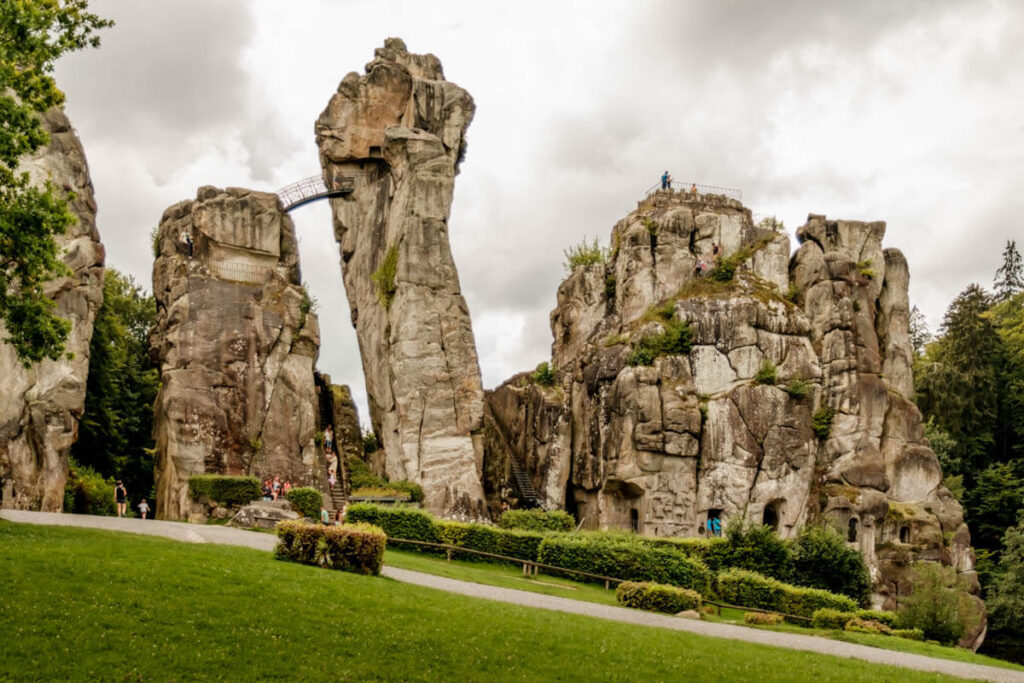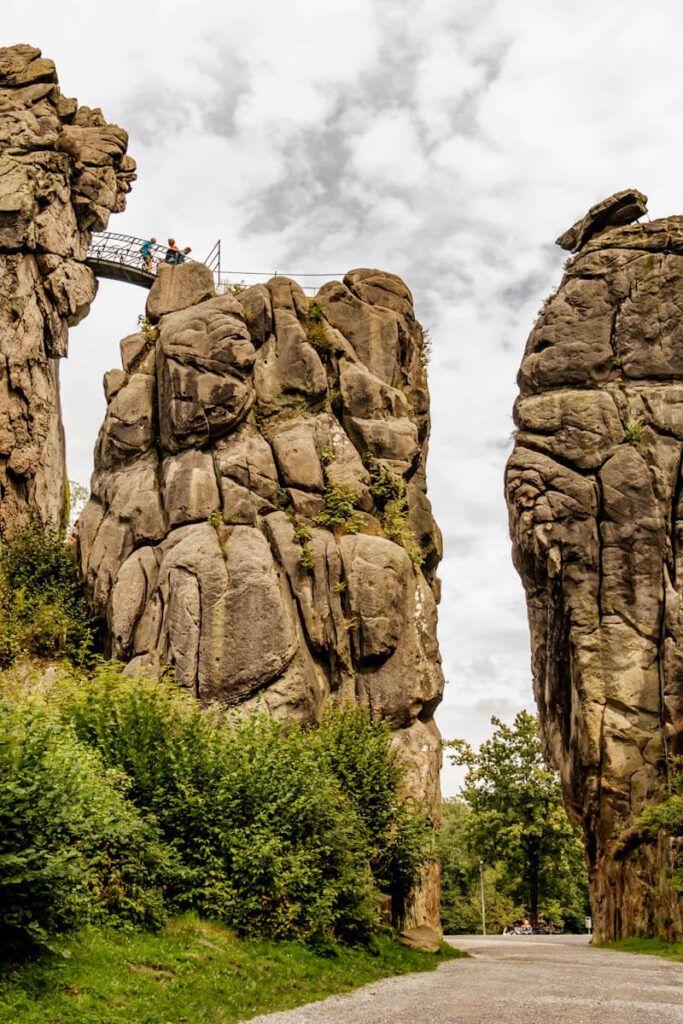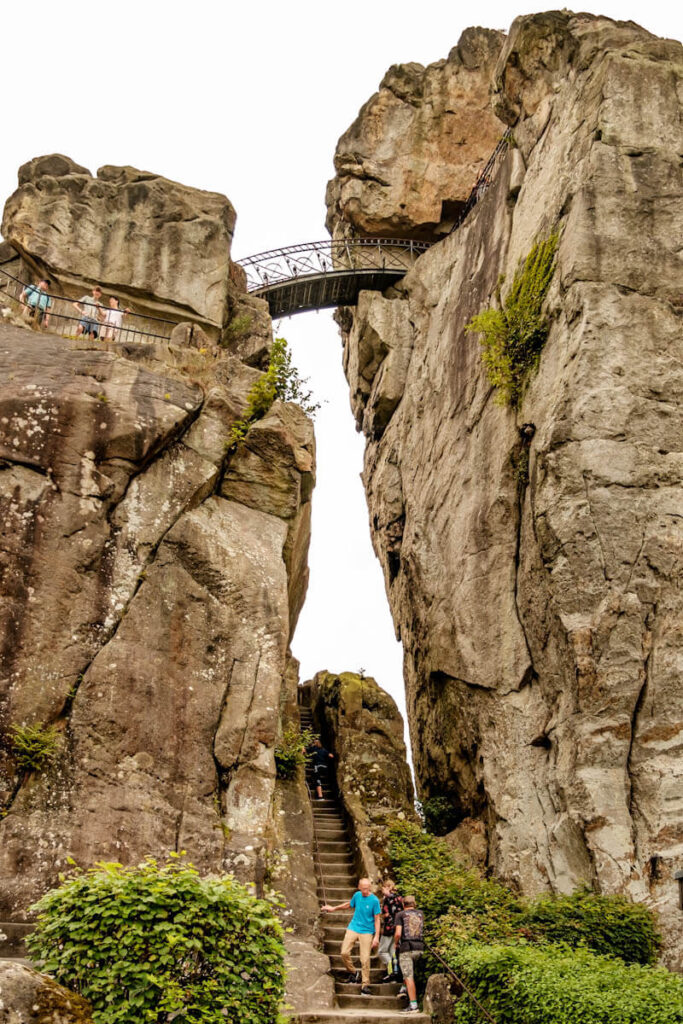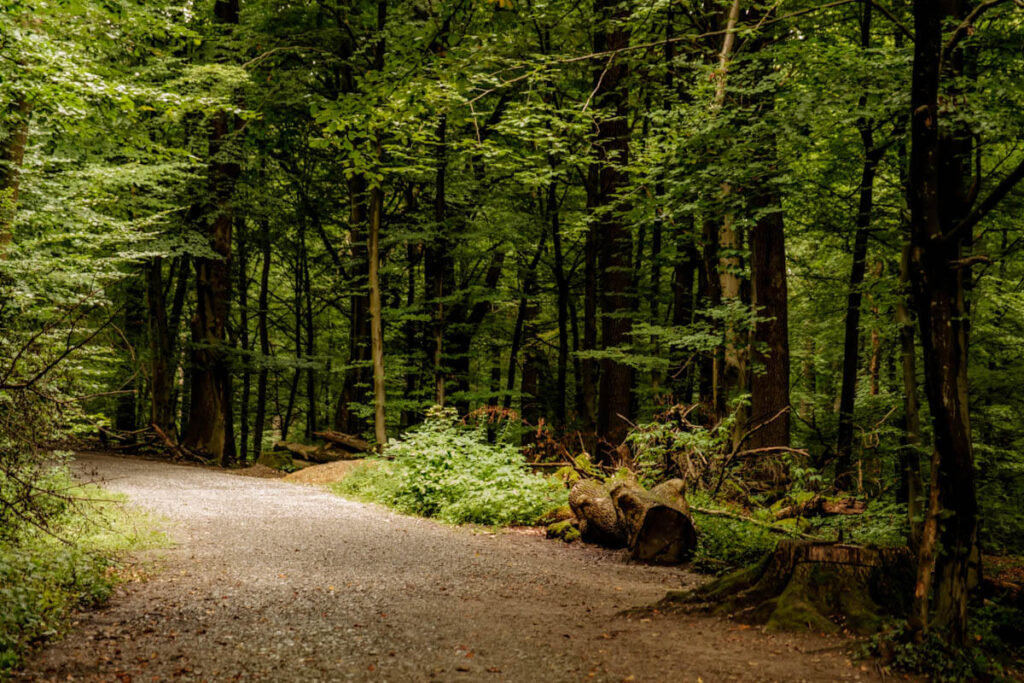In the forests of the Teutoburg Forest in North Rhine-Westphalia, Germany, you’ll find the impressive rock formations known as the Externsteine. These towering sandstone pillars rise over 40 meters high. I visit the Externsteine after a stay in Saxony, making it a perfect stop on my way back to the Netherlands. From here, it’s about a three-hour drive to Utrecht.
How the Externsteine were formed
The Externsteine formed around 120 million years ago during the Cretaceous period when the area was covered by a shallow sea. Sand and other sediments on the seabed gradually compressed into sandstone. Over time, tectonic forces pushed these sandstone layers upward, creating massive rock formations. Erosion by wind and water shaped the formations into what we see today.

The Externsteine in the Stone Age
Findings around the Externsteine prove that people were already present in the area during the Stone Age. Stone spearheads and flakes have been discovered, dating back to 10,000 BC. However, archaeologists have yet to reach a consensus on whether the site was used as a place of worship during that time.
A cult site in the early Middle Ages?
In the early Middle Ages, before Christianity took hold in the region, the Externsteine were surrounded by legends and mystery. Some stories suggest that the site once served as a pagan cult site, where rituals and sacrifices took place. These myths have contributed to the mystical aura of the Externsteine for centuries, attracting spiritually minded visitors even today. The site remains a popular location for various rituals and ceremonies, especially during the solstice.


The chapel in the Externsteine
In the 12th century, a chapel was carved into the rocks. It primarily served pilgrims visiting the Externsteine and was likely used for various religious ceremonies. At the entrance of the chapel, there is a stone relief depicting the Descent from the Cross. This relief is considered the most significant large-scale Romanesque sculpture in northwestern Germany.
Visiting (and climbing) the Externsteine
Access to the site is free; you only need to pay for parking (€4). Right next to the parking lot, you’ll find an information center where you can learn everything about the Externsteine, from their formation to their historical significance over the centuries. For a small fee, you can climb the Externsteine. The ascent takes you up narrow staircases and through dark chambers, leading to the top, where you’ll be rewarded with a stunning panoramic view of the Teutoburg Forest.

Hiking in the Teutoburg Forest
The Teutoburg Forest offers beautiful hiking trails, with several routes passing by the Externsteine. Two well-known trails are the Hermannsweg and the Eggeweg. The Hermannsweg stretches 160 kilometers from Rheine to Horn-Bad Meinberg, while the Eggeweg covers 70 kilometers from Horn-Bad Meinberg to Marsberg. Both trails run along the forested ridges of the Teutoburg Forest, with 80% of the Hermannsweg passing through protected nature reserves. More information about Hermannshöhen, as the combined trails are called, can be found here.

A great place to spend some time
The Externsteine exude a certain tranquility, making them a wonderful spot to spend some time; even if you’re not planning to hike in the area or climb the rocks. There is a large grassy field offering a beautiful view of the Externsteine, perfect for a picnic. I visit in the middle of peak season (mid-August) and I’m surprised by how quiet it is. A perfect stopover when traveling back to the Netherlands from eastern or central Germany.